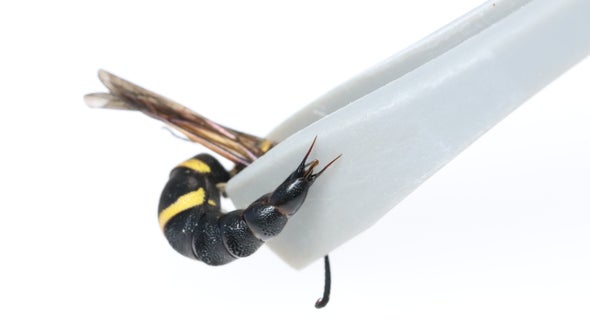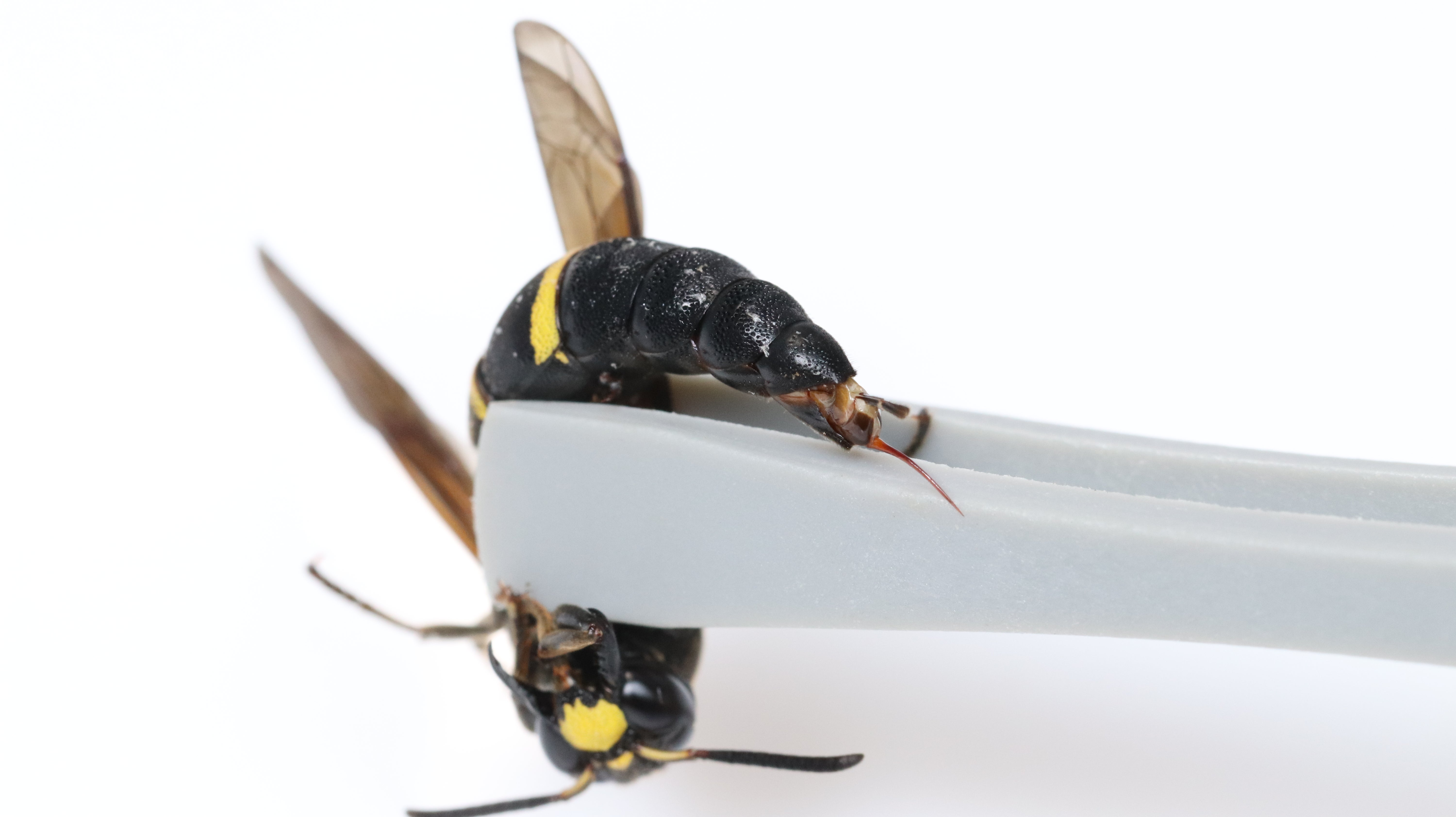In one species of mason wasp, “pseudo stings” on males’ genitals let them mimic females and scare predators
Thank you for reading this post, don't forget to subscribe!
The finding highlights “the significance of male genitalia as an antipredator defense” and opens a new perspective for “understanding the ecological role of male genitalia in animals,” says Kobe University insect ecologist Shinji Sugiura, lead author of the study, which was published in Current Biology.
To confirm that the pseudo stinging is used as a defense, the researchers placed wasp females, intact wasp males and wasp males whose genitalia had been removed in tanks with species of tree frogs and pond frogs, that are known wasp eaters. The frogs devoured all 17 wasps without genitalia. Pond frogs ate every wasp they encountered, but 35 percent of the intact male wasps were able to fight off tree frog predation with pseudo stings, causing the frog to spit them out. Eighty-seven percent of the female wasps escaped the tree frogs as well.

Justin Schmidt, a stinging insect expert at the Southwestern Biological Institute and author of the book The Sting of the Wild, says that the pseudo stinging probably contributed to the experimental results but that the frogs’ somewhat small size, relative to the wasps, and the size difference between male wasps and naturally larger females were also likely factors. Schmidt, who was not involved in the new study, adds that it’s not surprising that wasps with their whole genitals removed were less effective at fighting the frogs—and that he’d like to see the experiment replicated with wasps that had only the spines removed. Removing the whole apparatus, he notes, might be “awfully traumatic” for the wasps.
The male wasps may gain an evolutionary advantage by acting like females, whose stings inject venom and cause serious harm. To scare a predator into spitting it out, a male wasp “doesn’t actually have to do the damage,” Schmidt says. “It has to trick us into thinking that it’s doing the damage.”
Few other animal species have been shown to use their genitals as a defense mechanism, the authors write in their study, though hawk moths occasionally use special scales on their genitals to produce ultrasonic sounds that are hypothesized to confuse predatory bats.
ABOUT THE AUTHOR(S)
Grace van Deelen is a science and environmental journalist. She also has a research background and has worked in the field with pollinators and coffee plants. Read more of her work on her website.

